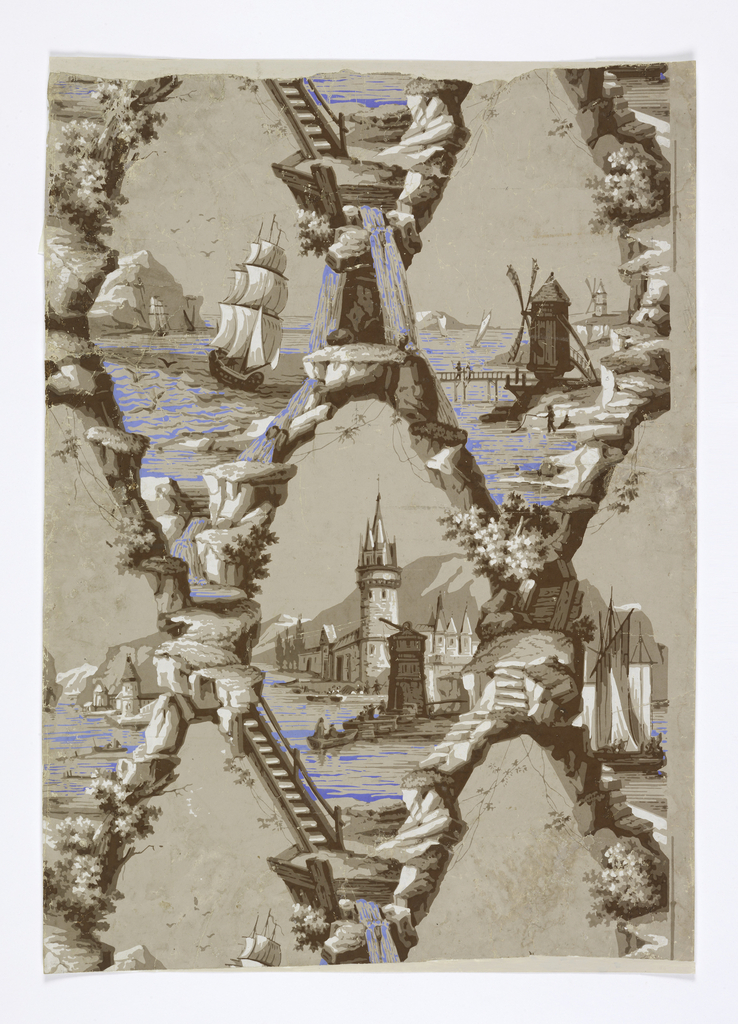This sidewall is a lovely example of a mid-nineteenth century “medallion-style” wallpaper, and represents an oddly specific niche in the world of fashionable Victorian wallcoverings. Picturesque vignettes of a harborside town show seagulls and tiny little people busily living their lives against backdrops of windmills, sailing ships and even a chateau. The vignettes are arranged in a diaper pattern, and are framed by a diamond trellis composed of craggy rocks, narrow staircases and knobby trees. Vines dangle from the tops of the frames, and waterfalls cascade down the trellis. The waterfalls are highlighted in a pleasant cornflower blue, which is also utilized in the harbor waves of the vignettes. The rest of the paper is printed in monochrome shades of brown on a taupe background, so the blue waters stand out strikingly from the rest of the images. The use of one bright color against a more neutral background was considered quite fetching at the time this paper was produced (c.1850). The imagery, as well as the color scheme, was very popular, and according to Richard Nylander in Wallpaper in New England, “repeating views of a spired and turreted building next to a body of water…framed by a fantastical structure of bridges and meadows” were made by a number of different manufactures.
This particular wallpaper found its way across the Atlantic and into the archive of Thomas Strahan & Co, who donated it to the Cooper Hewitt Museum in 1976. Strahan began as a wallpaper retailer in Boston, MA in the 1880s, and shortly thereafter began producing his own papers. The company remained in business until 2005. This imported example from Strahan’s inventory was of the type that was eagerly snapped up for use in staircases by his New England customers. So, in conclusion: in the 1850s, in New England, people wanted wallpapers featuring scenes of waterside castles framed by bridges and trees, rendered in a neutral palate except for one bright color, to decorate their staircases, because why not?
Anna Rasche is a student in the History of Decorative Arts & Design graduate Program at the Cooper Hewitt, and is a Master’s Fellow in the Wallcoverings Department.
